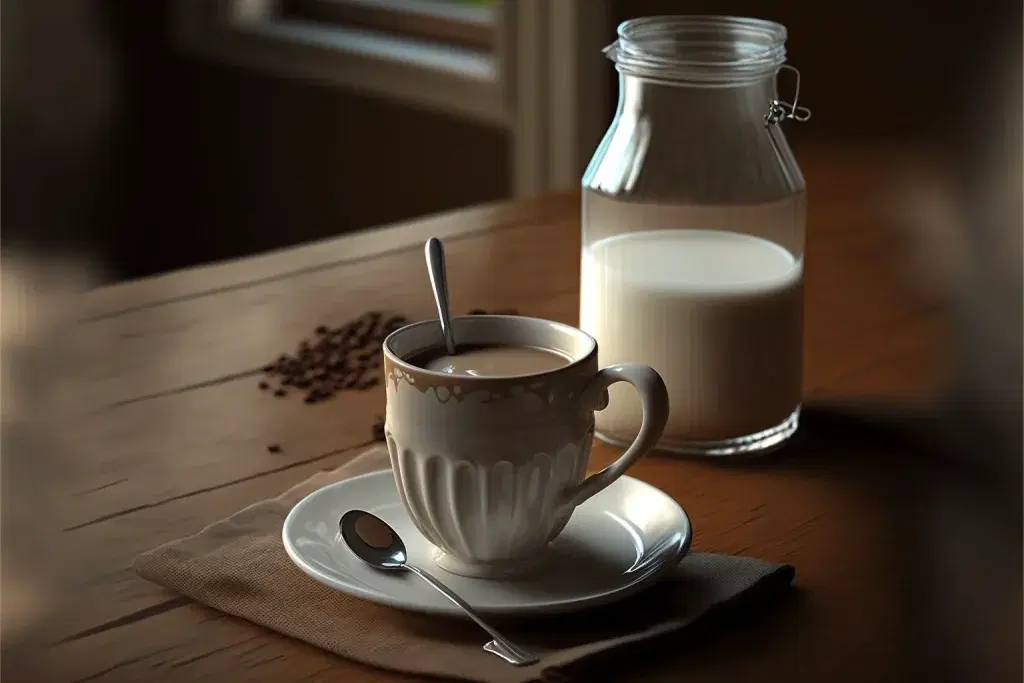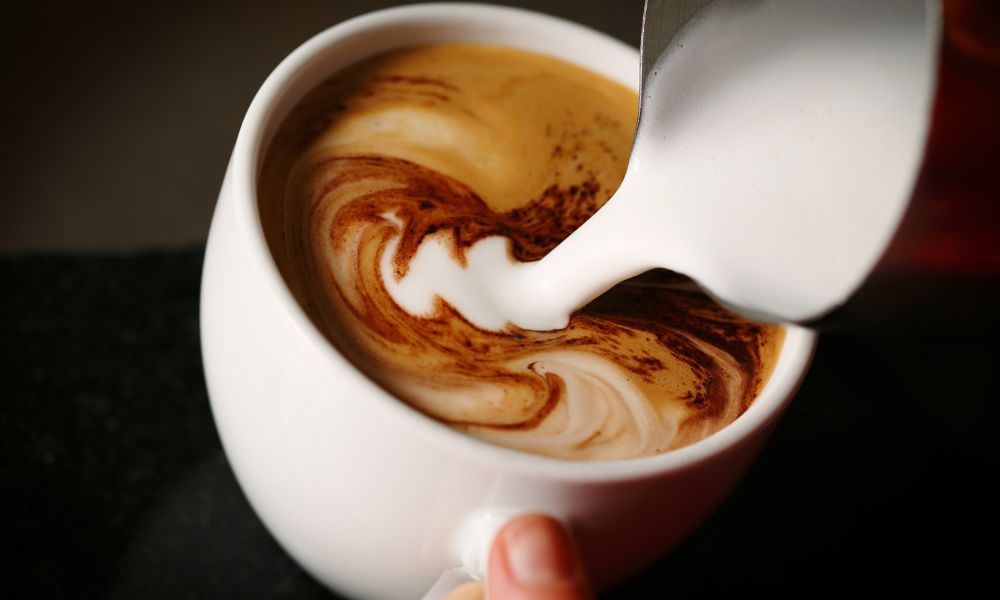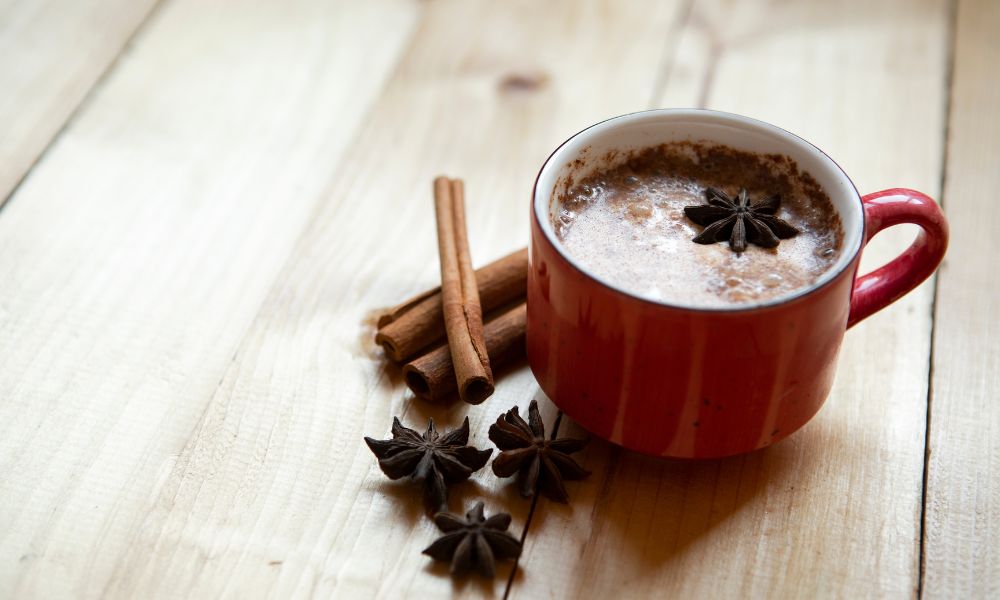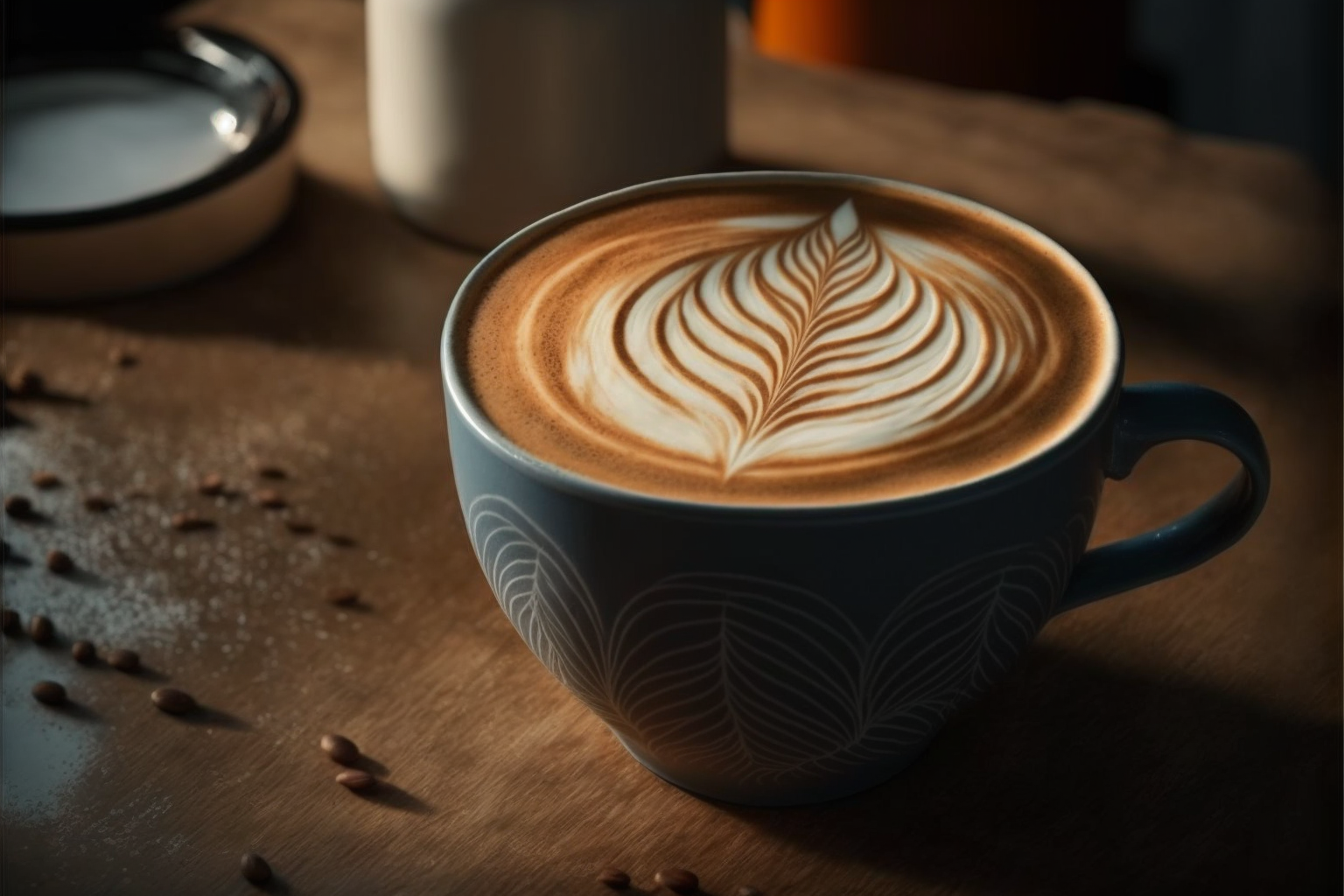When it comes to coffee, there are many options to choose from. From a simple black coffee to a fancy latte, the world of coffee is vast and diverse.
And speaking of lattes, have you ever found yourself in a coffee shop and wondering what the difference is between a latte and a cappuccino?
Or maybe you’ve heard of this thing called a “flat white” and you’re wondering how it’s different from a latte. Well, you’re not alone.
In this beginner’s guide to lattes, we’ll be covering everything from the basic ingredients to the history and even how to make one at home. So, sit back, grab a cup of coffee, and let’s dive in.
What is a Latte?

First things first, let’s define what a latte is.
A latte is a type of coffee drink made with espresso and steamed milk, typically topped with a small amount of foam.
The word “latte” is short for “caffe latte” which means “coffee and milk” in Italian. So, if you’re ever in Italy and you order a latte, you’ll be getting a cup of coffee with some milk.
But here in the United States, when we say latte, we’re usually referring to a drink that is made up of espresso and steamed milk.
What Is a Latte Made of?
It’s a delicious combination of two key ingredients: espresso and steamed milk.
Let’s start with the espresso, the heart, and soul of any latte. It’s a type of coffee that is made by forcing hot water through finely-ground coffee beans under high pressure.
This process creates a strong, concentrated coffee that packs a punch and will wake you up faster than a drill sergeant!
But here’s the thing, espresso on its own is like a rock concert without a drummer, it’s just not complete. That’s where the steamed milk comes in.
To make a latte, baristas steam milk to create a creamy, velvety texture that complements the strong coffee flavor of the espresso. It’s like adding a symphony to a rock concert, it just makes everything better.
The steamed milk is then poured over the espresso, creating a perfect balance of flavors that will make your taste buds do a happy dance.
Now, some people like their lattes strong and bold, while others prefer a more subtle flavor.
The ratio of espresso to steamed milk can vary depending on personal preference, but a traditional latte is made with about 1 part espresso and 2 parts steamed milk.
This ratio creates a smooth, rich flavor that is perfect for sipping on a chilly morning!
Why Coffee and Milk?

In simple terms, adding milk to coffee helps to balance out the bitter taste that comes from the acidity in coffee.
This is due to the proteins in milk, specifically casein and whey, that work with the antioxidant polyphenols in coffee to create the flavor we know and love.
Additionally, drinking coffee with milk is beneficial for your health as it provides additional vitamins and nutrients, as well as protects against throat burns (which may cause cancer) when consumed at high temperatures.
Espresso Drinks Similar to Latte
When answering the question of “what is a latte,” it is important to distinguish it from other coffee drinks like macchiatos and cappuccinos.
Lattes are often mistaken for cappuccinos, which are similar but distinct coffee drinks. The main differences between the two are the way they are made, and the amount of milk used.
The layering of ingredients is the main distinguishing factor.
Latte vs Cappuccinos vs Macchiatos
- Macchiatos are made by pouring 1-2 teaspoons of steamed milk into 1 ounce of espresso.
- Cappuccinos consist of 1 shot of espresso, equal parts of steamed milk, and milk foam (usually in a 1:1 ratio of milk to foam), and are topped with cocoa powder.
- Caffe Lattes have 1 part espresso and 2 parts steamed milk.
Essentially, lattes have more steamed milk and less foam than macchiatos and cappuccinos, the ingredients in a latte are mixed, but layered in a cappuccino.
A cappuccino typically has at least 1cm of microfoam, while a latte has around 0.5cm, which affects the texture of the beverage.
According to Tim Sturk, a coffee consultant for Booker Group, a latte is defined as a cappuccino with more milk.
Cappuccinos have a stronger coffee flavor than lattes due to the higher proportion of foam and less milk. They also tend to be thicker and creamier as a result.
Since lattes have more liquid, it is easier to add flavorings and additives to them than in cappuccinos.
Latte vs Flat White
A flat white is made up of espresso and steamed milk, just like a latte, but it has less foam and is usually served in a smaller cup.
So, if you’re looking for a stronger coffee taste with less foam, flat whites might be the way to go.
History of Caffe Latte
Now that we know what a latte is, let’s talk about its history.
The tradition of combining coffee and milk dates back to the 1600s in European coffee houses and has been a popular choice for many coffee drinkers at home.
The first recorded instance of someone adding milk to coffee was in 1660 when a Dutch ambassador in China adopted the local tradition of adding milk to tea.
The practice later spread to Austria in 1684, where a coffee shop owner began serving coffee with milk to cater to customers who didn’t like the bitter taste of the strong Turkish brew.
This led to the creation of various milk-based coffee beverages, such as caffè latte in Italy, Milchkaffee in Germany, café con Leche in Spain, and café au lait in France.
The term “latte” to describe a milk-based coffee beverage wasn’t established until the late 1860s.
The Latte Today
The US played a significant role in developing the latte as we know it today, with Americans adding milk to make coffee taste milder after importing espresso machines from Italy post-World War II.
The latte rose to popularity in Seattle in the late 1980s by Howard Schultz, the CEO of Starbucks. It quickly spread to coffee shops across the United States throughout the 1990s.
With the rise of Starbucks and other coffee shops, the latte became a staple in American culture.
There are even two specific days set aside to celebrate lattes:
- October 7th is National Latte Day
- December 3rd is National Peppermint Latte Day
Step-by-Step Guide to Making a Latte at Home

The history of the latte isn’t just about the rise of coffee shops, it’s also about the art and science of making a good latte.
Baristas have been honing their skills for years to create the perfect latte, from the right amount of foam to the perfect latte art.
And let’s not forget about the science of it all. The temperature of the milk, the pressure of the espresso, and the ratio of milk to foam all play crucial roles in making a delicious latte.
Well, the good news is that it’s not as hard as you might think. You don’t need a fancy espresso machine (although it would be great to have one under $200) or a barista’s degree to make a latte at home. All you need is a few basic tools and ingredients.
Have the Correct Equipment
First, you’ll need an espresso machine or a stovetop manual espresso maker.
If you don’t have either of those, you can use a French press or a Moka pot to make a strong cup of espresso coffee.
Finally, you’ll need a milk frother or a small saucepan and a whisk.
Ingredients Needed for a Perfect Latte
- High-quality coffee beans for making espressos
- 1 cup of whole milk (Whole milk works best for lattes because it creates a rich, creamy foam).
- Sweetener (optional)
Make The Latte – Instructions
Here’s a basic recipe for making a latte at home:
Step 1: Making Your Espresso
Use an espresso machine or manual espresso maker to create two shots of espresso coffee and pour it into a mug (preferably one of these espresso cups!).
Step 2: Steaming or Frothing Your Milk (Using Espresso Machine)
If you’re using a dual boiler machine, like the De’Longhi EC 155, you can brew your espresso and steam your milk simultaneously. Aim for them to finish at the same time.
If you’re using an entry-level budget single boiler machine, you’ll have to do it one at a time.
To create perfect foamed milk:
- Pour the milk into a pitcher
- Use the wand of an espresso machine that makes steam and hold it just below the surface of the milk until it doubles in size, creating the frothy foam on top.
- Move the wand lower and near the side of the pitcher and make a swirling motion, this creates small, smooth bubbles (milk foam) and gives the latte a wet paint-like texture.
- Steam until the milk gets hot (around 150 degrees Fahrenheit), you can use a thermometer or judge by when the pitcher becomes too hot to hold for more than a few seconds.
[Note – Skip Step 3 if you have an automated machine!]
Step 3: Heat the Milk to Scalding Temperature and Foam (Without Espresso Machine)
To make latte milk, you need to heat it to 150 degrees Fahrenheit (it should feel hot, but not too hot). You can measure the temperature with a thermometer or test it with your finger.
To make the milk frothy, you can use a milk frother, a French press, or a whisk. You don’t need too much froth, just enough so the milk mixes in with the coffee nicely.
If you’re using a French press, it’s helpful to have at least 1 cup of milk so you have enough for two drinks
After you froth, the milk, wait for 30 seconds to 1 minute for the foamed milk to mix in and separate a bit.
[Attention – If this is your first time frothing, I highly recommend you to read this guide on how to froth milk.]
Step 4: Add Steamed Milk to the Espresso, Put Everything Together, and Serve
To make sure the milk is smooth, tap the container on the counter and swirl it to break up any big bubbles.
Carefully pour the steamed or frothed milk on top into the center of the espresso base, making sure to leave some light foam on top.
If you want to get fancy, try doing latte art by creating designs with milk. Just remember, latte art takes practice, so don’t get discouraged if your first attempt doesn’t look like a work of art.
If desired, add sweetener to taste. And you’re good to go with a delicious cup of homemade caffe latte!
Here is a video guide on steaming milk and pouring latte art you can follow throughout the process.
How to Make Latte Art at Home?

Latte art is also an essential aspect of the modern latte, with it being rare to not find it in most coffee shops today. It was popularized in the 1980s by David Schomer, the owner of Espresso Vivace.
To make latte art at home without a machine, you will need to practice pouring the steamed milk into your coffee in a way that creates a design. Here are a few tips:
- Start by pouring the steamed milk into the center of the coffee, and then slowly move the pour in a circular motion to create a spiral pattern.
- Use the tip of the pour spout to create lines and shapes in the foam.
- Experiment with different pouring speeds and angles to achieve different effects.
- Practice makes perfect! The more you pour, the better you will become at creating latte art designs.
- You can also try using tools like a toothpick or a skewer to create designs on the surface of the latte.
- You can also use food coloring to make your latte more colorful and fun.
Exploring Variations of the Standard Latte
Here’s the thing, lattes aren’t just for the traditionalists. Many variations of lattes include different flavors and ingredients.
Some popular variations include vanilla lattes, caramel lattes, and pumpkin spice lattes. These variations are made by adding flavored syrups or spices to the basic latte recipe.
It’s like giving your latte a makeover, and who doesn’t love a good makeover?
In addition, you can also make a latte with non-dairy milk like soy milk or almond milk.
If you’re feeling adventurous, you can even try an iced latte. It’s a latte served over ice, perfect for those hot summer days.
Tea Lattes

Tea lattes are a variation of traditional coffee lattes that are made with tea instead of coffee.
Some examples of tea lattes include –
- Chai Latte
- London Fog Latte
- Golden Latte
- Matcha Latte
These lattes are typically made without espresso, but many baristas may add an espresso shot to them.
When an espresso shot is added to a tea latte, it is referred to as a “dirty” version of that latte. For example, a “Dirty Chai Latte” would be a Chai Latte with an added shot of espresso.
FAQs
Can I make a latte with almond milk or soy milk?
Yes, you can make a latte with almond milk or soy milk. However, the foam may not be as thick as it would be with cow’s milk.
Is a latte healthier than a cappuccino?
It depends on how you make it. A latte made with skim or low-fat milk will have fewer calories and less fat than a latte made with whole milk. Similarly, a cappuccino made with skim or low-fat milk will also have fewer calories and less fat than one made with whole milk.
Is an iced latte just milk and coffee?
An iced latte typically consists of espresso, cold milk, and ice. Some variations may also include flavorings or syrups. So, it’s not just milk and coffee.
